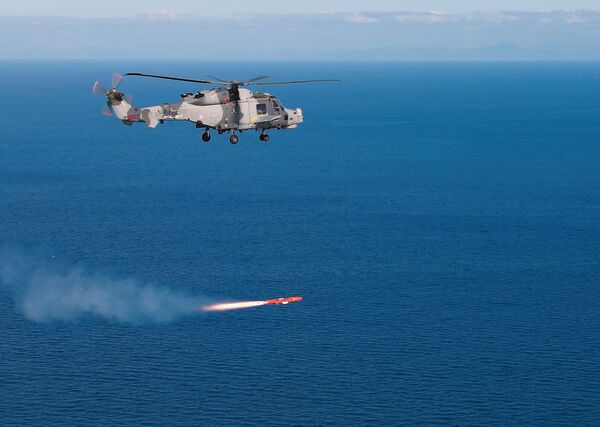
An MBDA Sea Venom anti-ship missile has successfully completed its first guided live firing from a UK Royal Navy Wildcat helicopter at the MoD Aberporth Range in Wales. (UK Royal Navy/Crown Copyright)
A UK Royal Navy (RN) AW159 Wildcat HMA2 helicopter has successfully conducted the first guided live firing of a Sea Venom anti-ship missile.
Announcing the milestone on 9 October, the RN said the firing marks a significant step forward in the integration of Sea Venom onto Wildcat to provide the helicopter with an offensive capability against targets up to corvette size.
The live-fire trial was carried out at the UK Ministry of Defence's (MoD's) Aberporth Range in Wales and consisted of a single firing against a single target, the RN said.
The target vessel was designed and built by QinetiQ engineers, made of three containers atop a barge. Each container wall had multiple individually controlled heating elements to simulate a target more accurately.
Developed by MBDA for the RN and French Navy for their joint Future Anti-Surface Guided Weapon – Heavy/Anti Navire Léger (FASGW(H)/ANL) programme, Sea Venom is a 100 kg-class compact, drop-launch sea-skimming missile that flies out to its target at high subsonic speed and can put a 30 kg semi-armour-piercing blast/fragmentation warhead into a target from a range in excess of 20 km.
Designed for use in complex open water and littoral environments, the missile is effective against a wide target spectrum ranging from fast attack craft up to corvettes and light frigates. It can also provide coastal suppression capability against land-based threats and infrastructure.
Looking to read the full article?
Gain unlimited access to Janes news and more...







